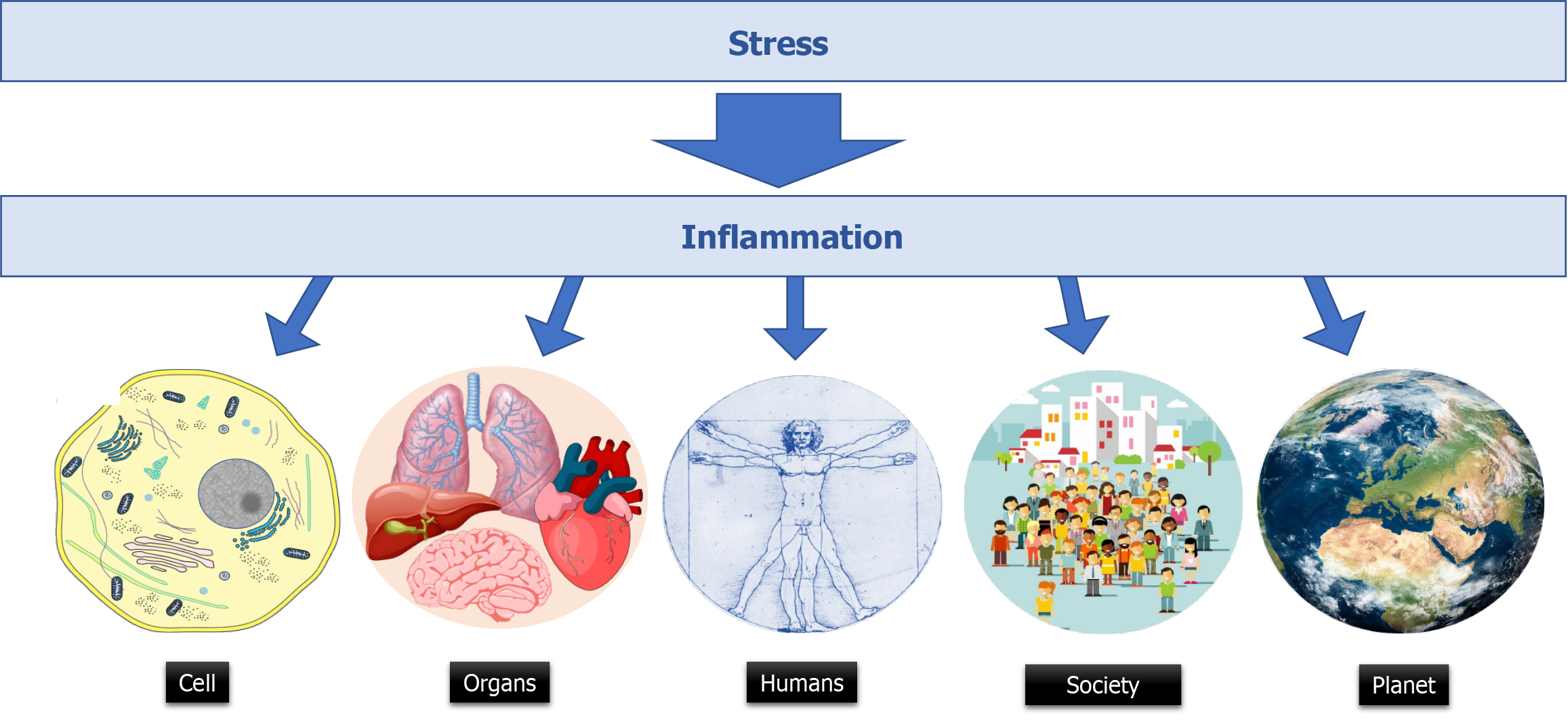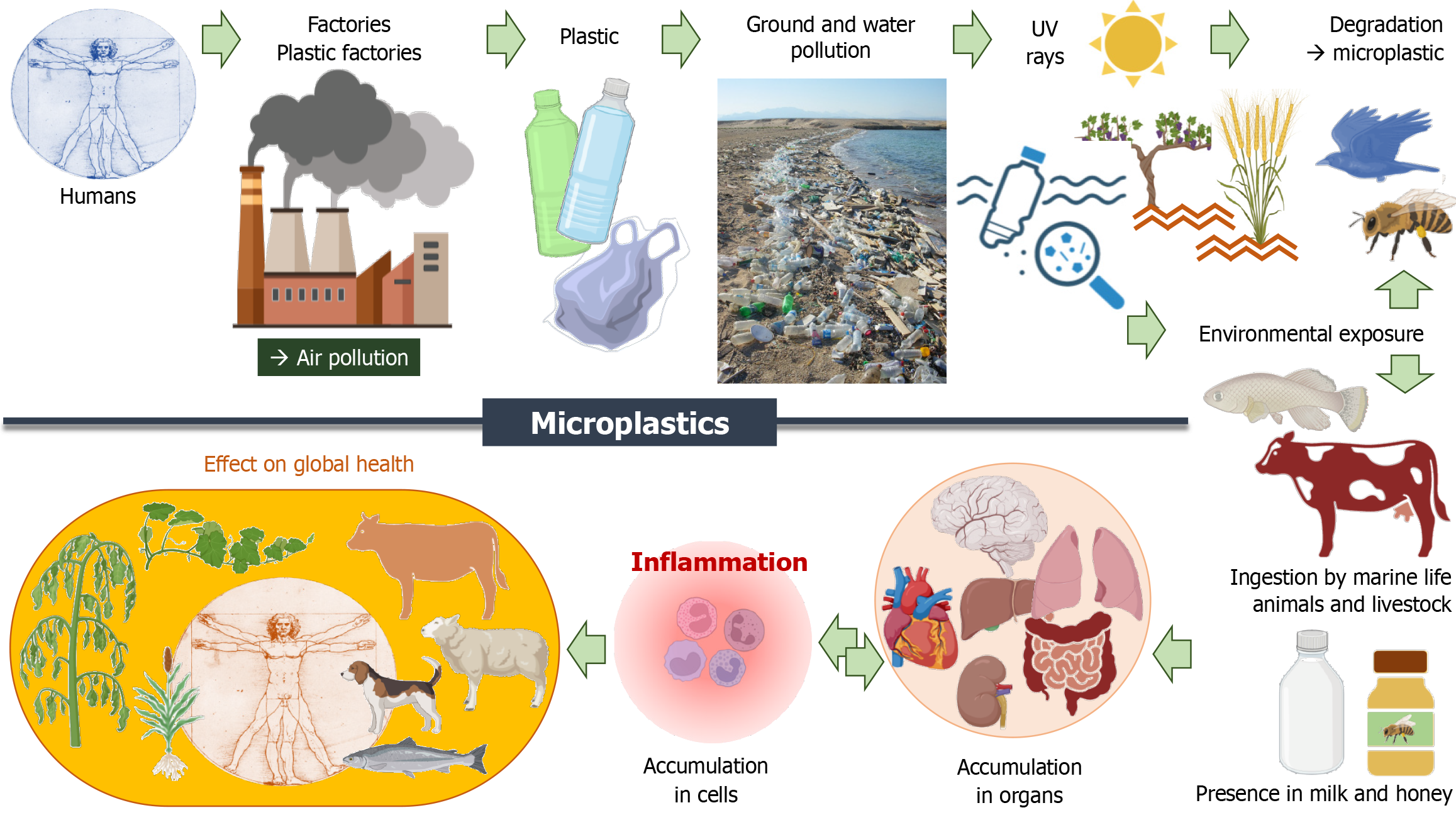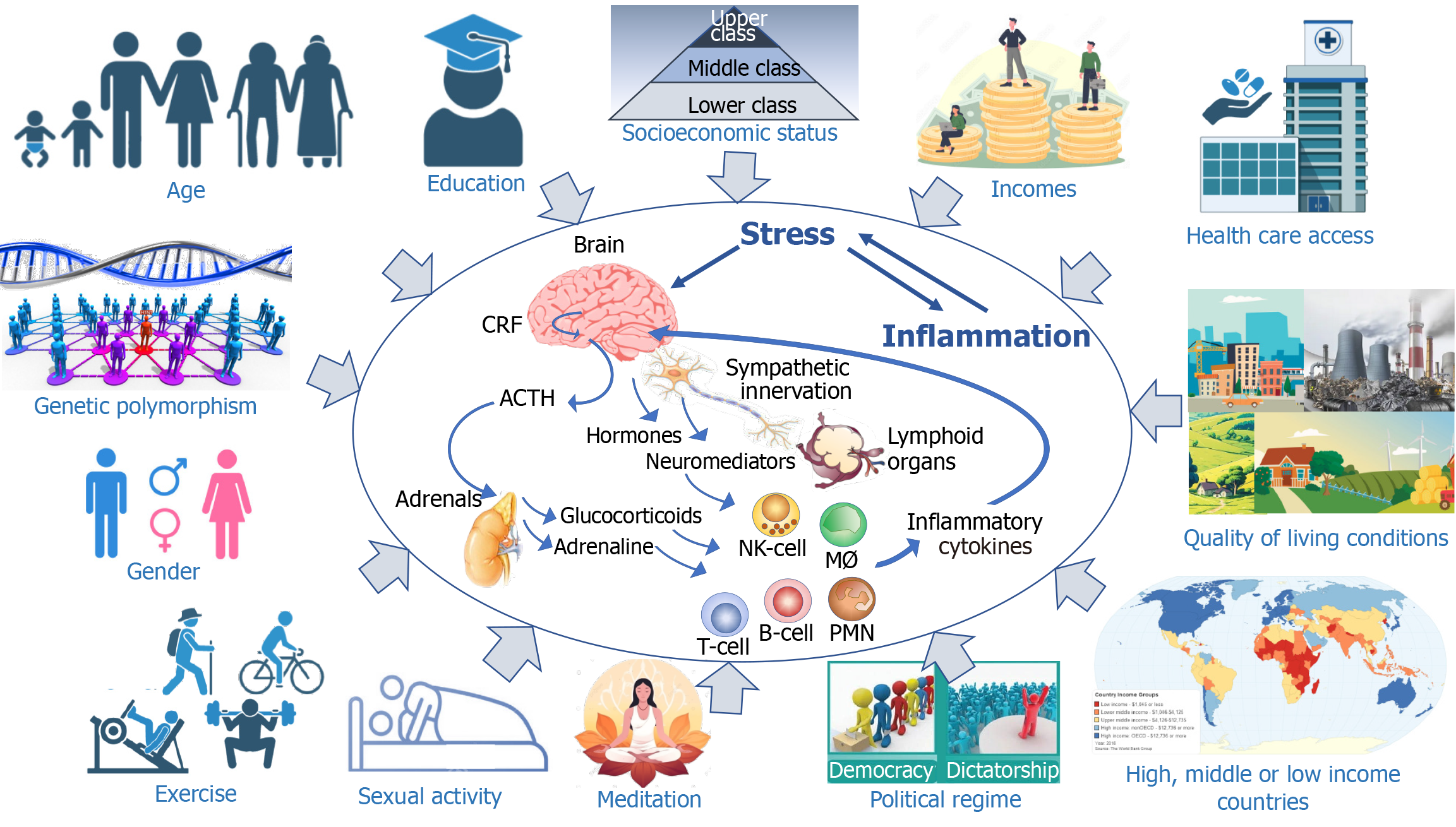Copyright
©The Author(s) 2024.
World J Exp Med. Dec 20, 2024; 14(4): 96422
Published online Dec 20, 2024. doi: 10.5493/wjem.v14.i4.96422
Published online Dec 20, 2024. doi: 10.5493/wjem.v14.i4.96422
Figure 1
As pointed out by Hans Selye, stress and inflammation affect all human components as well as their own societal and planetary environment.
Figure 2 A domino effect, from the production of plastics by human industries to the environmental pollution to their degradation into microplastics that contaminate wild life animals and livestock, and the products derived therefrom.
The ingestion and inhalation of microplastics by humans generate an inflammatory reaction in cells and organs. UV: Ultra-violet.
Figure 3 Stress favors an inflammatory response which is regulated by the neuro-endocrine axis.
Many parameters modulate positively or negatively this response. CRF: Corticotropin releasing factor; ACTH: Adrenocorticopic hormone; MØ: Macrophage; PMN: Polymorphonuclear cell (Neutrophil); NK cell: Natural killer cell.
Figure 4 Inflammation involved many pro-inflammatory molecular players while many others allow a controlled response and a return towards homeostasis.
IL: Interleukin; TNF: Tumor necrosis factor; CRP: C-reactive protein; IFN: Interferon; NK cell: Natural killer cell. Citation: Cavaillon J. Molecular Mediators: Cytokines. Reviews in Cell Biology and Molecular Medicine 2015. Copyright © 2015 John Wiley and Sons, Inc. All rights reserved. Published by Reviews in Cell Biology and Molecular Medicine[358].
- Citation: Cavaillon JM, Chaudry IH. Facing stress and inflammation: From the cell to the planet. World J Exp Med 2024; 14(4): 96422
- URL: https://www.wjgnet.com/2220-315x/full/v14/i4/96422.htm
- DOI: https://dx.doi.org/10.5493/wjem.v14.i4.96422
















